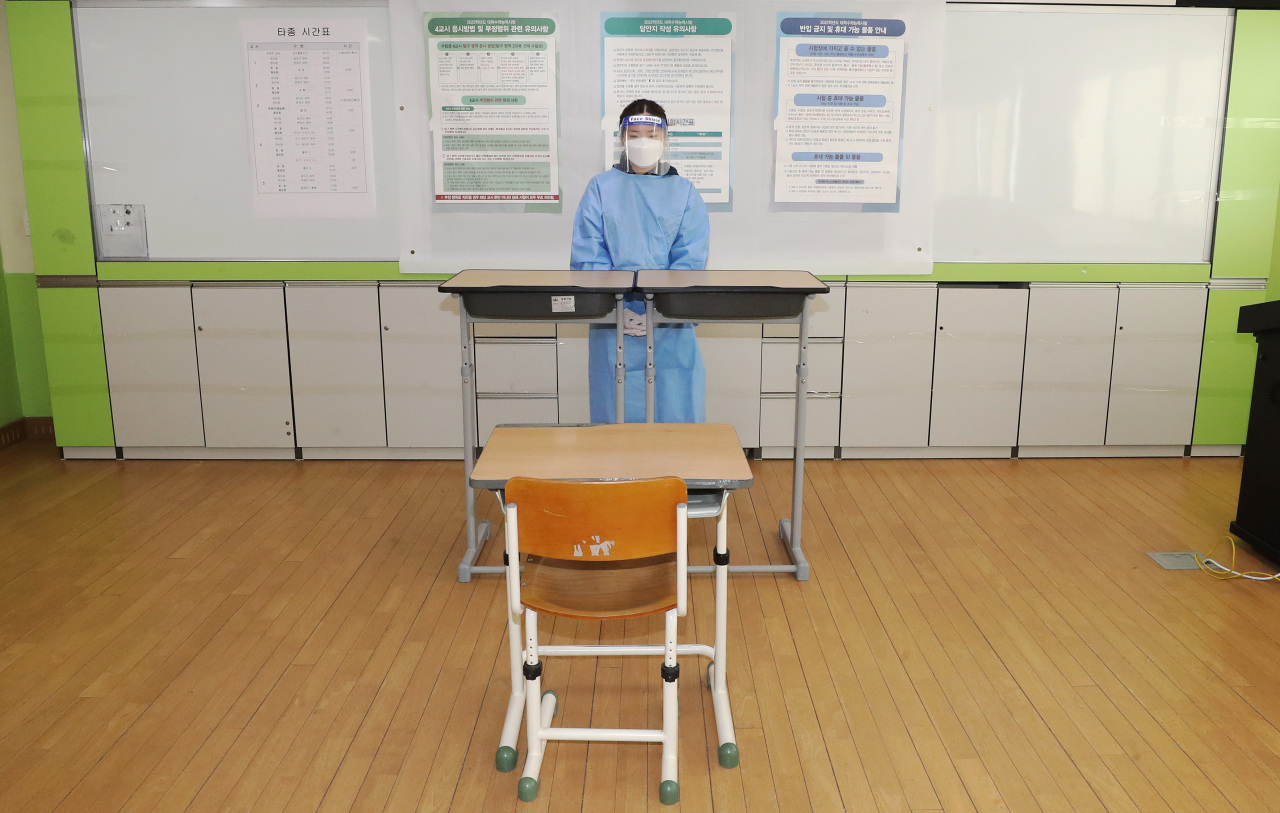Just two weeks after South Korea began an official return to normal, a bed shortage is looming, prompting the government to organize an emergency meeting with hospitals.
But even as hospitals scramble to make room for COVID-19 patients, the government is intent on keeping the country open, pursuing instead policies to boost travel and spending.
Senior officials of the Ministry of Health and Welfare on Tuesday morning held an emergency teleconference with directors of hospitals in Seoul and nearby Incheon and Gyeonggi Province -- which comprise Greater Seoul -- as beds fill rapidly. The ministry said that measures to secure more beds were discussed at the meeting, which was held behind closed doors.
By late Monday afternoon, nearly 80 percent of intensive care beds in Greater Seoul were occupied, up from around 70 percent a week prior. It was the second consecutive day the threshold of 75 percent for activating the emergency action plan had been met. The emergency plan involves reinstating recently lifted restrictions such as nightly curfews for places with high risks of transmission.
The number of patients with severe or critical COVID-19 cases reached an all-time high of 495 on the same day, replacing the record of 485 set over the weekend. Nationwide there were 695 patients in intensive care from COVID-19, occupying 61 percent of the total beds. As not all patients undergoing intensive care count as a severe or critical cases, the number of occupied intensive care beds is higher.
Along with hospitalizations, deaths are on the rise. For the first half of November, COVID-19 claimed the lives of 19 people each day on average. In October, the daily average number of deaths stood at 12.
Son Young-rae, Ministry of Health and Welfare spokesperson, reiterated Tuesday that the COVID-19 situation in Korea did not call for pausing return to normal plans, saying although Seoul hospitals were “seeing higher rates of patients, on a national level, beds remain available.”
The spokesperson explained that measures to boost the intensive care surge capacity were already underway. Up to 10,000 cases could occur without overwhelming the health care systems, he said, as a result of Nov. 5 administrative orders for hospitals to reserve more beds for COVID-19 patients. Patients would also be discharged from intensive care early to make space for new patients, he added.
But Dr. Eom Joong-sik, an infectious disease specialist at Gachon University Medical Center in Incheon, pointed out that patients admitted to intensive care often did not have anywhere else to go while they were still recovering.
“Not only is it hard to discharge COVID-19 patients from intensive care as quickly, there aren’t that many hospitals that can afford to take them in, especially while they are still infectious,” he said. He also complained that his hospital was running low on nurses amid heavy workload and poor compensation.
Another infectious disease specialist at Korea University Medical Center, Dr. Kim Woo-joo, said, “In a sense, Korea’s hospitals are already under some emergency operation orders, although the government is not inclined to openly admit it.”
Kim said that even if beds outside Seoul may be available, transporting intensive care patients to hospitals hundreds of kilometers away was challenging. According to a Seoul official, in all of the city there are only four ambulances with the negative-pressure equipment needed to carry COVID-19 patients.
In response to press queries, Son said there was no official tally of the available ambulance services for transporting COVID-19 patients nationwide or the number of patients who had to be transported outside their respective region to find a bed.
Dr. Paik Soon-young, an emeritus professor of microbiology at Catholic University of Korea, said despite the worrying trends Korea was too quick to jump to policies that go against efforts to slow the spread.
Cashback rewards were handed out to some 8.1 million people last month alone under the Ministry of Economy and Finance’s schemed aimed at invigorating spending, and consumption vouchers to 1.6 million people, with more people to receive similar benefits this month. The Ministry of Culture, Sports and Tourism was offering hotel coupons to 1.3 million people to incentivize travel.
“These policies breed complacency and tell people it’s OK to be out and about again, when the metrics suggest otherwise,” he said.
To date Korea has fully vaccinated more than 78 percent of its 51 million people. Upon clearing the target of a 70 percent full vaccination rate, the country entered the first of a three-stage return to normal on Nov. 1, forgoing most of its pandemic curbs.
By Kim Arin (
arin@heraldcorp.com)








![[Today’s K-pop] Blackpink’s Jennie, Lisa invited to Coachella as solo acts](http://res.heraldm.com/phpwas/restmb_idxmake.php?idx=644&simg=/content/image/2024/11/21/20241121050099_0.jpg)